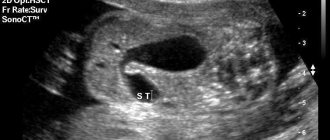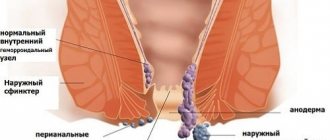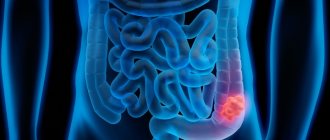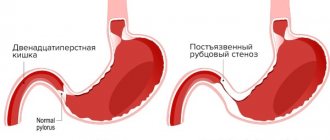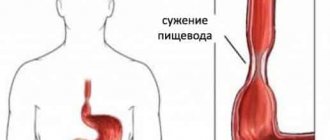Reasons for the problem
Appendicitis is an inflammation of the appendix - the cecum. Its progression can cause great trouble, even death. Accurate diagnosis that assesses the severity of inflammation is the most important factor in preventing tragedy. The manifestation of characteristic symptoms in appendicitis is due to inflammation of the deep layer, involving the surrounding structures.
Diagnosis of pathology is complicated by the variety of symptoms manifested in various inflammatory diseases. For timely detection of appendicitis, there are various types of diagnostic parameters proposed by qualified researchers.
They received names corresponding to the names of the authors. Such symptoms are aimed at determining the primary diagnosis using external signs and behavior of the patient. Its basis is an external examination, with elementary manipulations creating artificial conditions and postures.
There are four main categories of manifestations of appendicitis:
- pronounced signs of inflammation;
- painful sensations;
- dyspeptic symptoms;
- peritoneal.
The intensity of symptoms is affected by:
- location of the process;
- patient's individuality;
- duration of the development period;
- severity of the course;
- complicating factors.
Accurate determination of the necessary parameters of the disease is only possible with a more detailed examination.
Determination technique
The method for identifying the Shchetkin-Blumberg symptom is extremely simple:
- The patient is placed in a horizontal position, asked to bend his knees and relax his abdominal muscles. The patient should breathe evenly, calmly, but shallowly.
- The doctor takes a side position and applies gentle pressure on the peritoneal wall with his fingers. In this way, he finds the most painful area and determines the most sensitive area.
- Slowly and carefully presses on it with his whole palm, gradually plunging deeper.
- He abruptly tears his hand away from his body.
If acute pain occurs in the right lower abdomen, inflammation of the appendix of the cecum is confirmed. Taking an anamnesis allows you to identify hyperthermia, dizziness, nausea, vomiting that does not bring relief, signs of impaired digestion, and lack of appetite.
The intensity of the manifestation of the malaise depends on the location of the process, the duration of inflammation, the severity of the disease, and the presence of complicating factors.
An accurate determination of the parameters of the condition is possible after laboratory and instrumental examination. A general blood and urine test is required. Biochemistry, ultrasound of the peritoneal organs, and radiography are performed. If all these methods prove to be ineffective, laparoscopy is performed to determine the causes of the serious condition.
Shchetkin-Blumberg symptom
The value of the technique is the ability to determine inflammatory processes in the peritoneum using conventional palpation - manual examination of the patient by pressing on the abdomen. In this case, the symptom manifests itself as sharp pain. During the examination, tension in individual or all abdominal muscles is noted. Increased pain upon abrupt cessation of palpation is caused by irritation of abdominal pain receptors. This manifestation has the most striking symptoms in the presence of peritonitis.
Localization of specific signs greatly facilitates diagnosis. In the case of limited peritonitis, the symptoms are local in nature, determined by the location of the pathological focus. For example, a positive reaction to palpation in the right iliac region indicates the existence of acute appendicitis.
Doubtful signs appear when the muscle layers of the peritoneum are overstrained, forming a disc-shaped abdomen, indicating the onset of the development of peritonitis.
In case of delayed diagnosis of pathology
this sign may also look dubious. Reduced activity of the abdominal nerve endings is due to their damage.
The manifestation of pain syndromes of different localization with this method of diagnosis may indicate the existence of the following pathologies:
- ulcerative damage to the digestive organs, complicated by organ rupture;
- acute appendicitis;
- myocardial infarction;
- pneumonia;
- peritoneal hematoma;
- pathologies accompanied by uremia;
- hematoma of the abdominal cavities.
Regardless of the location, a positive syndrome is a sign of an emergency condition that requires confirmation of the diagnosis and immediate assistance. When diagnosing a positive reaction of the syndrome, it is not enough, so other signs characteristic of a particular disease are taken into account:
- Acute appendicitis - localized in the right iliac region, characterized by pain in the lower quadrant of the peritoneum on the right during percussion.
- Acute cholecystitis - localized in the right hypochondrium. It is determined by pain at the moment of tapping the inflamed area with the edge of the palm.
- Diffuse peritonitis - distributed throughout the peritoneum. In the area of the right hypochondrium, the percussion sound is not dulled.
- Acute pancreatitis is determined by inflammation localized in the area of the left hypochondrium. It is determined by the weakening or complete absence of aortic pulsation at the time of palpation.
This method of diagnosing acute surgical diseases was first described in 1907 by the German physician Blumberg. But the Russian gynecologist Shchetkin used it in medical practice long before that, already in the late 80s of the 19th century. True, he was able to fully describe and present his method only a year later than Bloomberg, speaking at a meeting of the medical community in Penza. Therefore, the diagnostic method was given a double name after the names of the discoverers.
Accuracy of the diagnostic method
In acute appendicitis, the described symptom is most pronounced. In the initial stages of peritonitis, it manifests itself weakly; when it is used, diffuse pain is formed. Their intensity is difficult to describe by the patient, so he talks vaguely about his condition.
The Shchetkin-Blumberg symptom has a high diagnostic value for diffuse inflammation of the peritoneal layers. The pathogenesis of the disease is characterized by a general severe condition. If palpation reveals a “board belly”—severe tension in the anterior peritoneal muscle—the syndrome may be questionable. When the contents of the gastrointestinal tract have been leaking into the retroperitoneal space for a long time, the technique also does not work well. This is due to the fact that the nerve endings lose their activity.
The value of the method lies in the fact that it allows one to determine inflammatory processes in the peritoneal area at the first stages of the examination. A positive symptom is a sign of a condition that requires immediate medical attention.
Manifestation of symptoms
Appendicitis is almost always characterized by an unexpected onset, accelerated progression, and pronounced symptoms. A chronic course, in which inflammation develops over a long period of time, periodically exacerbating, is observed in only 1.5% of patients. The following proprietary syndromes are used to determine the disease:
- Kocher. Determines pain migration and is used most often. It is based on the gradual movement of painful sensations from the epigastric region to the iliac region. The accuracy of detecting appendicitis is above 50%.
- Voskresensky. Considered a sign of an abdominal irritant. To carry it out, the fabric of clothing is pulled over the stomach, along which a quick movement is made with the edge of the palm. If there is inflammation of the appendix, iliac pain appears on the right. Similar testing is carried out for other organs located in this area. Accordingly, painful sensations will change their localization.
- Shchetkin-Blumberg. It is the most accurate indicator of the presence of peritonitis in appendicitis and other pathologies. Diagnosis is made by deepening the palm of the hand into the abdominal wall. Appendicitis manifests itself as acute pain when suddenly raising the arm.
- Rovzinga. The technique is used quite rarely, although it is highly reliable. It is based on the artificial creation of a painful condition by pressure of the cecum with gas. The appearance of iliac pain indicates the presence of appendicitis.
- Sitkovsky. By placing the patient on his side, the intestinal loops are moved, causing compression of the appendix, which results in severe pain.
- Obraztsova. Used to determine pathology in the retrocecal location of the appendix. To do this, the patient lying on his back is forced to raise his right leg without bending. Muscle tension causes pain in the lower abdominal cavity.
Methodology
To identify a symptom, during palpation of the abdomen, slowly press with your hand (or an object, for example, a stethoscope) on the anterior abdominal wall. In this case, the patient notes more or less severe pain. If, upon quickly removing the palpating hand, the abdominal pain sharply intensifies, the symptom is positive. If the nature of the pain does not change when the hand is removed, the symptom is negative.
Sometimes a symptom is said to be “questionable.” This means that the patient experiences pain or discomfort when pressure is removed from the anterior abdominal wall, but it is not severe. This may also mean that the correct verification of the symptom is hampered by strong tension in the muscles of the anterior abdominal wall (“defense”), pronounced subcutaneous fat layer, ascites or bloating.
Questionable symptom
A dubious variant of the symptom occurs. The patient notes pain in the peritoneum after the doctor’s manipulations, but not severe, as in patients who cry out during palpation.
Reasons that lead to a questionable symptom:
- Patient obesity.
- Bloating.
- Severe tension in the abdominal muscles.
Sometimes a dubious symptom is caused by advanced peritonitis, in which the nerve endings die in the peritoneum. This explains the inhibition of the patient's reaction.
Diagnosis in men
Taking into account certain anatomical features of the male body, there is special testing to determine appendicitis.
- Laroca - consists of determining the location of the testicles, since with appendicitis the right testicle can spontaneously move upward.
- Horna - when twitching or pressing the scrotum, a painful sensation is noted in the right testicle.
- Britten - when you press on the lower part of the tense abdomen, the right testicle rises, returning back after removing the hand.
Significance in diagnosis
The positive Shchetkin-Blumberg symptom is caused by irritation of the peritoneum and is most pronounced in peritonitis. With limited peritonitis, the symptom is local in nature, for example, in patients with appendicitis it is determined in the right iliac region. When a hollow organ is perforated and the contents of the gastrointestinal tract enter the free abdominal cavity, the symptom is detected in all parts of the abdomen, which indicates generalized peritonitis.
With sharp tension in the muscles of the anterior abdominal wall (“board-shaped abdomen”) and in the initial stages of peritonitis, the symptom may be questionable. Also, the symptom may be less pronounced in the later stages of peritonitis due to degenerative changes in the nerve endings of the peritoneum.
Sometimes the symptom can be positive in patients with uremia, pneumonia, myocardial infarction (“pseudo-abdominal syndrome”), hemoperitoneum, acute pancreatitis, hematoma of the anterior abdominal wall or retroperitoneal tissue.
Shchetkin Blumberg's symptom: in what diseases is it observed?
In addition to peritonitis and acute appendicitis, the symptom is positive when:
- Ulcerative lesions of the stomach or intestines, aggravated by rupture of the organ and entry of contents into the peritoneum.
- Inflammation of the gallbladder - cholecystitis.
- Inflammation of the pancreas - pancreatitis.
- Injuries of the gastrointestinal tract.
- Abdominal and retroperitoneal hematoma.
Diseases in which irritation of the peritoneum is not associated with pathology of the gastrointestinal tract:
- myocardial infarction;
- diabetes;
- pneumonia;
- intoxication of the body due to renal failure.
For women, a positive Shchetkin-Blumberg symptom is evidence of ectopic pregnancy, apoplexy or perforation of ovarian abscesses.
Regardless of the source, a positive Shchetkin-Blumberg symptom (especially in children) is an alarming sign. Such a patient needs to immediately confirm the diagnosis and take medicinal treatment measures, including surgery.
Women's diagnostics
Women also have specific manifestations of appendicitis. Considering that the symptoms of the appendix often resemble gynecological pathologies, additional diagnostics make it possible to identify the disease.
- Promptova - when examined by a gynecologist, the cervix moves, the appearance of pain indicates the development of gynecological pathology, excluding appendicitis.
- Zhendrinsky - when you press your finger on the Kümmel point, below the navel, pain appears, which intensifies when standing up and confirms the presence of appendicitis.
- Brando - pressing on the left rib causes pain during pregnancy.
The diagnosis of an inflamed appendix is not limited to the above symptoms. It is aimed at the initial examination of the patient, but is not able to fully guarantee the correct diagnosis. Accurate diagnosis depends on the results of instrumental and laboratory examinations.
